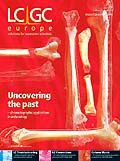Single-Compound Isotopic Analysis of Organic Materials in Archaeology
LCGC Europe
Isotopic analysis of archaeological materials provides information on age and source, but analysis of single compounds isolated from artefacts can provide more accurate measurements and additional details. In this article, the authors provide a review of chromatographic separations of archaeological biomolecules for their analysis using accelerator mass spectrometry or isotope ratio mass spectrometry. The article concentrates primarily on studies involving carbon and nitrogen.
Characterizing Plant Polysaccharides Using Size-Exclusion Chromatography
April 4th 2025With green chemistry becoming more standardized, Leena Pitkänen of Aalto University analyzed how useful size-exclusion chromatography (SEC) and asymmetric flow field-flow fractionation (AF4) could be in characterizing plant polysaccharides.
Investigating the Protective Effects of Frankincense Oil on Wound Healing with GC–MS
April 2nd 2025Frankincense essential oil is known for its anti-inflammatory, antioxidant, and therapeutic properties. A recent study investigated the protective effects of the oil in an excision wound model in rats, focusing on oxidative stress reduction, inflammatory cytokine modulation, and caspase-3 regulation; chemical composition of the oil was analyzed using gas chromatography–mass spectrometry (GC–MS).





